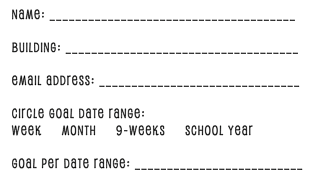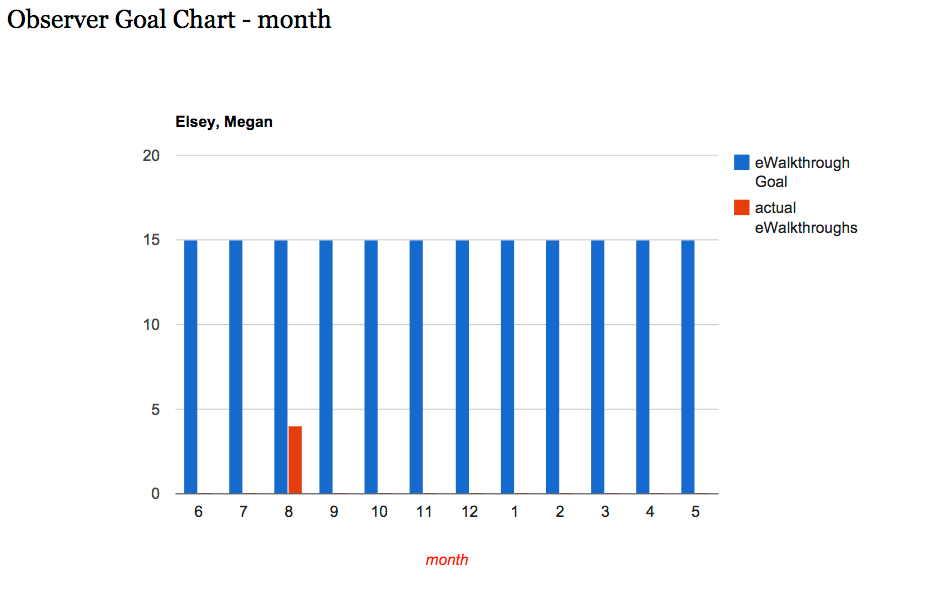|
Educators must continually be supported in the effort to deliver excellent teaching. Student success must remain the center of all our work in education. We know, and research confirms, that classroom observations are an excellent choice for supporting best practice instruction. As building and district leaders implement the digital eWalkThrough system, or another observation tool, for this process there are easy steps for success:
eWalkThrough data are collected and shared in real-time as instruction is being delivered. Teachers receive immediate feedback on which they can reflect to impact their practice. Data ensure that resources target specific instructional needs. Teachers are supported with exactly what they need in their individual professional learning. Where are you in this process as an instructional leader? How do you know you are implementing the steps? I want to hear from YOU! Comment below with your take on the 3 Easy Steps.
26 Comments
As we enter into the new school year, there are a couple of reminders I want to offer as considerations for building and district leaders. Please be planning for, and considering, your own professional learning for the school year. Part of this professional learning should center around the eWalkThrough. The “summer shift of knowledge” didn’t just happen to the students. You know when teachers say “but I taught them that concept last year!” The same concept applies to adult learning. It has likely been at least three months since administrators have been in classrooms, either individually or collectively, to conduct observations. Calibration needs to happen to assure reliability and validity of the observation process. Many schools also made summer changes to their tool and these need to be reviewed and calibrated as well. Don’t forget those new administrators you’ve added to your team. They need to be trained in both the content of the tool and calibrated in the process. Because the eWalkThrough has such potential as a catalyst to support excellent instruction and a positive shift in learning (Walk-Through as Powerful, n.d.), we can’t let new administrators lag behind in this knowledge and process. Plan to provide support for new administrators for at least the first 2-3 months of school and invite them to accompany you in your building on observations and offer to go with them in theirs. Goal Setting! Another back to school process I believe ensures the quality process of implementation of the eWT. Administrators should reflect on their archived data from the 14-15 school year in setting their goals for the year. These goals can be entered into the digital eWT system under the building tab. (See Diagram below) These cards are handed out to administrators during calibration or data analysis days with SWPRSC eWalkThrough consultants. We then input the information directly into your tool so that administrators can check on whether other observers are meeting their goals and expectations for eWalkThrough use. This is a picture of an actual eWalkThrough Goal Chart that administrators can view anytime to see where observers are on their goals. Good luck and have a fantastic year! Take full advantage of the eWT tool to support your teachers and student success!
Our approach to the eWT is likely quite different than most. Our desire for this process is to provide support and resources to improve teaching and increase student achievement through its application. Our purpose for the eWT is to provide a short, focused, informal observation with immediate feedback to the teacher for reflection. The eWT observation is about 3-5 minutes in a classroom. There is no intent to evaluate the teacher. Instead, it is a time to gather data about instruction, curriculum, classroom management, and other teaching practices and decisions that a teacher is making. The eWT should occur at all points in the day and at all times during the hour or instructional period. These observations are unannounced. No record of these observations is put in the teachers personnel file. The primary focus of the eWT is to determine professional growth needs of the individual teacher, grade level group, professional learning community, building, or district. ("business people" by Adam Grabek on Flickr) Our ultimate goal leads to reflective dialogue around the data to drive professional learning decisions. When a teacher or administrative group is analyzing the eWT data, they should not be asking the question…what are we doing wrong, but instead, what professional learning do I need in order to improve my teaching practices.
At Southwest Plains, we believe that teaching can and should be excellent. We believe that at the heart of excellent teaching, each and every teacher WANTS to do the right thing for students. However, unbeknownst to the administrator, the teacher may not have the skill set or knowledge to provide this level of instruction. Without regular observations and classroom visits, this lack of knowledge could go on for years. We believe there is a set of research-based best practices that will enhance instruction and support student learning. These should be understood and implemented by every teacher. Due to the ability of the eWT to disaggregate observation data in multiple ways (K-12 math teachers, all 4 grade teachers, all elementary schools in a district, etc.), districts can finally provide DIFFERENTIATED PROFEESSIONAL LEARNING for their teachers. We have boasted the need for differentiated instruction for our students over the last 15 years. Why are adult learners any different? Don’t teachers deserve the right to have professional learning that meets their needs? In education, we should no longer offer “teacher inservice”. I define this, teacher inservice, as coffee, conversation, and in many cases no application to the professional growth of the majority of teachers in attendance. |
Kelly GillespieKelly's insights on classroom observation, education, leadership, teaching, and mentoring. Archives
July 2018
Categories
All
|



 RSS Feed
RSS Feed
